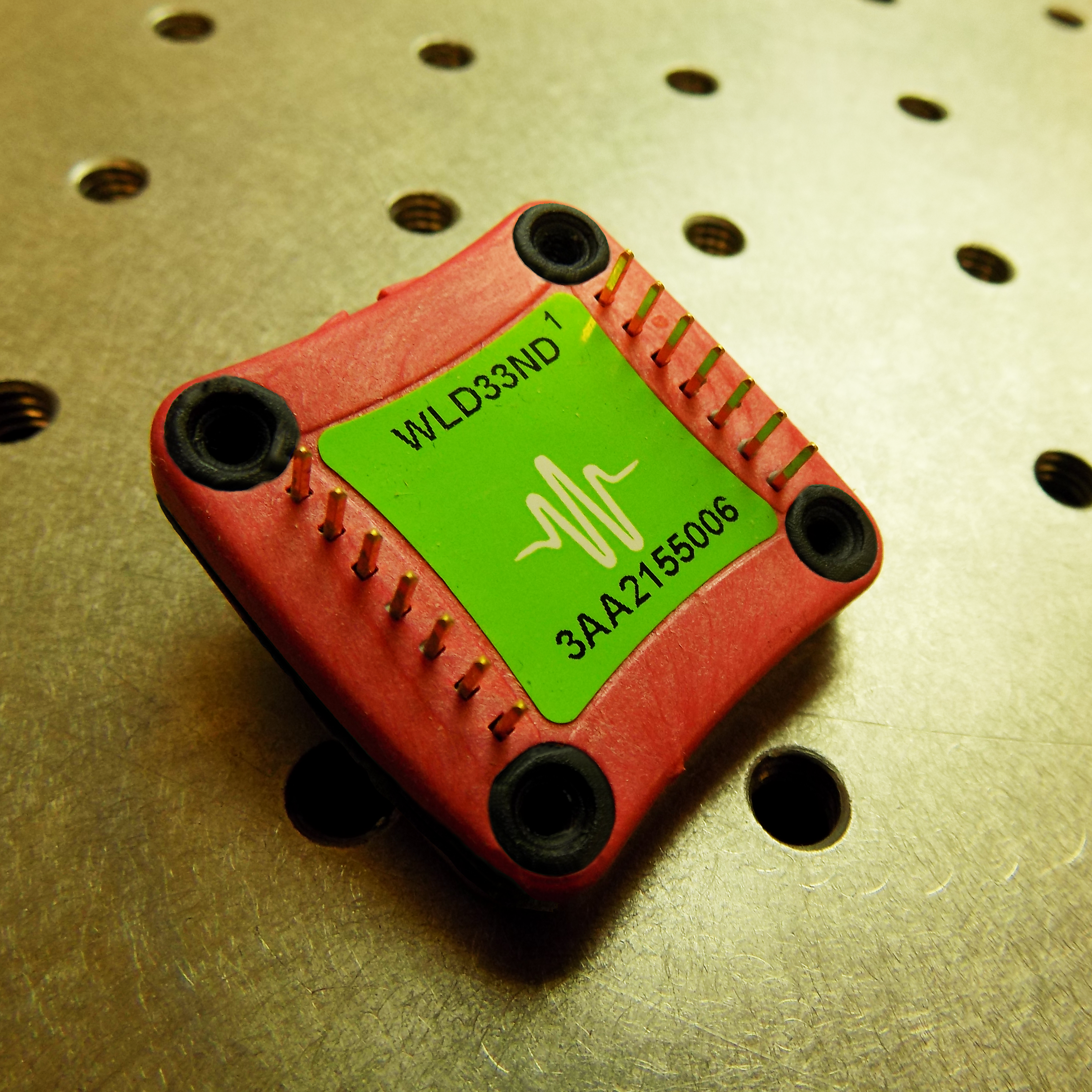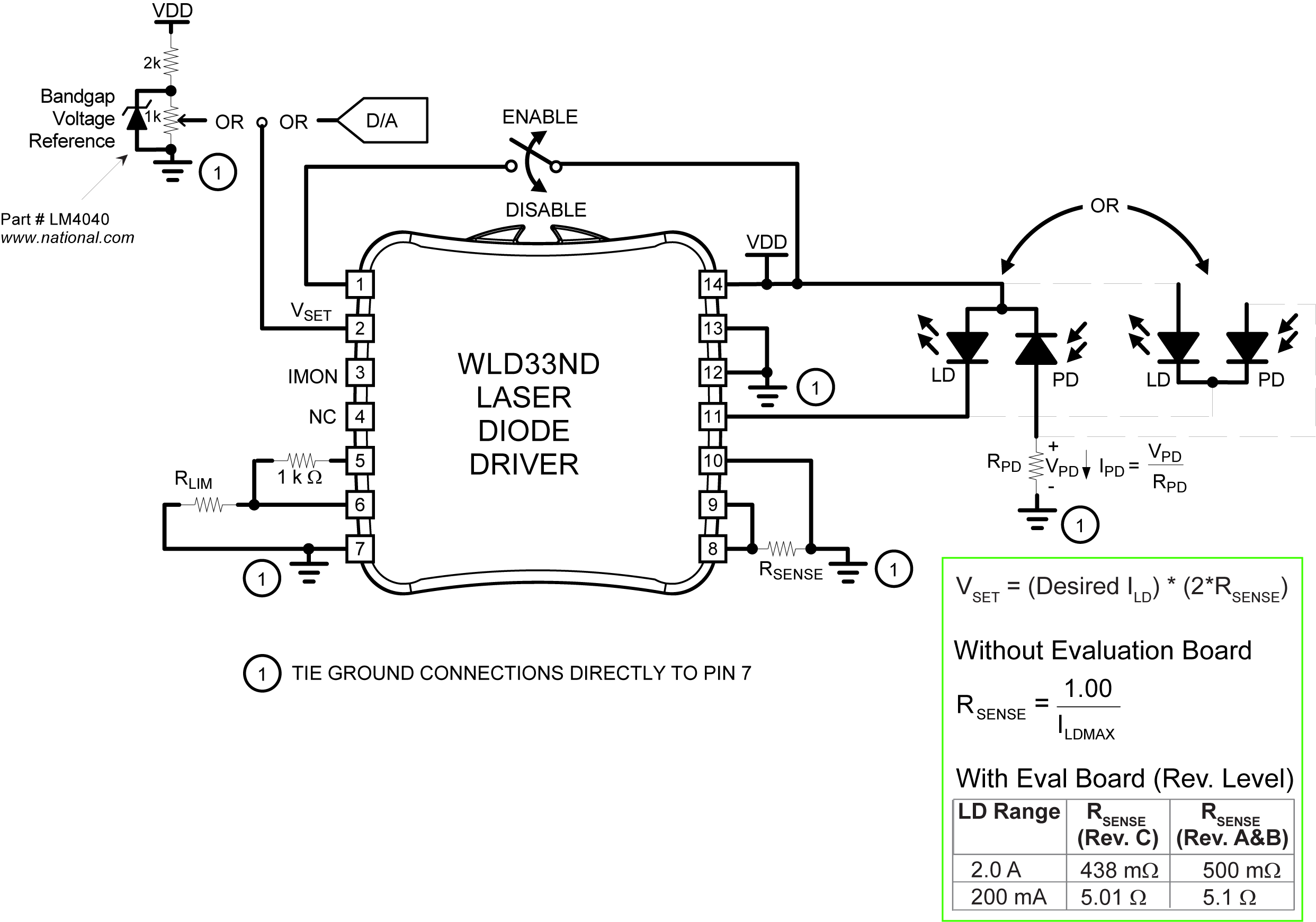The WLD33ND is a general purpose laser diode driver that maintains precision laser diode current (Constant Current mode) or stable photodiode current (Constant Power mode) using electronics that are compatible with any laser diode type. It delays and slowly ramps the current for maximum protection. Supply up to 2.2 A of current to your laser diode from a single +5 V power source. An evaluation board is available to simplify prototyping: WLD33ND-2AEV.
An internal thermostat shuts down the WLD safely if the device temperature exceeds 105°C. Remotely enable or disable current. Zero leakage current allows operation with VCSELs. Current range is scaled by an external resistor.
To operate from 3.6 V (for Lithium-Ion batteries) try the WLD33ND-HB. For 3 A operation, the WLD33ND-3A is available. These drivers have noise above 45 µA. To drive with lower noise in Constant Current Mode only, the WLD33ND-2L and WLD33ND-3L drive up to 2 A and 3 A, respectively. A circuit calculator tool speeds selection of external component values (see Design Tools tab). Heatsinking solutions to use the WLD33ND at full current are available.
This laser diode driver is ideal for applications where space is tight. It is widely used in electro-optic qualification, Raman spectroscopy, medical diagnostic equipment, range finders, eye-safe atmospheric lidar and on research benches.
Free, effective, and responsive technical support is available to simplify integration of Wavelength products into your OEM design. Standard product can be easily modified to meet your application requirements.


















